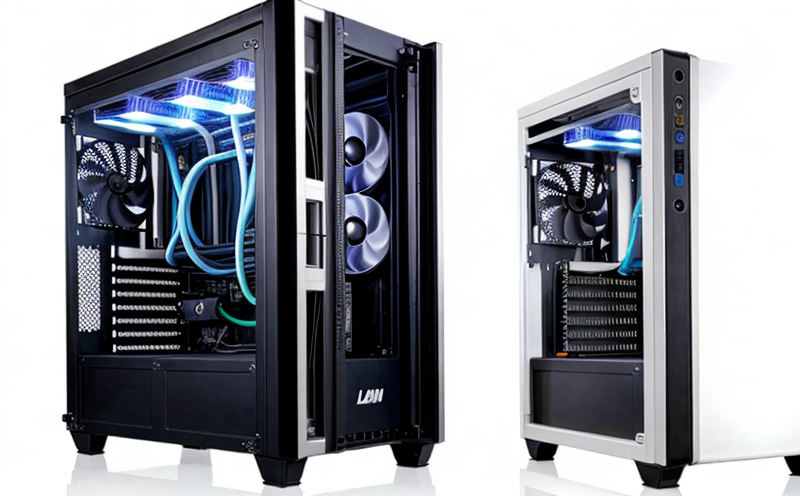EN 13779 Thermal Efficiency of Air Handling Systems
The European Standard EN 13779 specifies a method for determining the thermal efficiency of air handling systems used in HVAC (Heating, Ventilation and Air Conditioning) applications. This standard is particularly important for ensuring that these systems operate efficiently, thereby reducing energy consumption and operational costs.
Thermal efficiency refers to the ratio between the useful heat output from an air handling system and the total input energy required to achieve this output. This metric is crucial in the HVAC sector as it directly impacts the overall performance of a building's climate control systems. Efficient air handling units can lead to significant savings on utility bills, contribute to sustainable practices, and enhance occupant comfort.
According to EN 13779, thermal efficiency is measured under specific operating conditions that simulate real-world scenarios. These include the supply air temperature, return air temperature, humidity levels, and outdoor air conditions. The standard also considers factors such as fan power consumption, motor efficiency, and insulation properties of the system components.
The testing procedure outlined in EN 13779 involves several key steps:
- Installation of a standardized test rig that accurately simulates the operational environment.
- Measurement of input energy using calibrated instruments like wattmeters and flow meters.
- Recording of output parameters such as supply air temperature, humidity, and heat transfer rate.
- Calculation of thermal efficiency based on the collected data.
The results from this testing are essential for manufacturers to ensure their products meet regulatory requirements and perform optimally in various climatic conditions. Compliance with EN 13779 is mandatory for air handling units intended for use within the European Union, ensuring a high level of product quality and reliability.
Understanding the nuances of EN 13779 helps stakeholders such as quality managers, compliance officers, R&D engineers, and procurement professionals make informed decisions. By adhering to this standard, organizations can enhance their reputation for delivering energy-efficient solutions while maintaining strict adherence to international norms.
| Parameter | Description |
|---|---|
| Supply Air Temperature | The temperature of air delivered by the system. |
| Return Air Temperature | The temperature of air returned to the system for reprocessing. |
| Humidity Levels | The moisture content in both supply and return air streams. |
| Outdoor Air Conditions | Environmental conditions affecting the performance of the system. |
In summary, EN 13779 is a vital standard for assessing thermal efficiency in HVAC equipment. It provides a robust framework for measuring and reporting on energy consumption and output, thereby promoting sustainable practices within the industry.
Eurolab Advantages
EuroLab stands out as one of Europe's leading testing laboratories, offering specialized services to ensure compliance with EN 13779. Our team of experts is well-versed in the intricacies of this standard and can provide comprehensive support throughout the testing process.
- Accurate Testing Equipment: We utilize state-of-the-art instruments that are regularly calibrated to ensure precise measurements.
- Rigorous Quality Control: Our processes adhere strictly to international standards, ensuring reliability and accuracy in all test results.
- Comprehensive Reporting: Detailed reports are provided with each testing session, offering insights into performance metrics and recommendations for improvement.
- Expert Technical Support: Our team comprises experienced professionals who can offer guidance on best practices and compliance strategies.
- Client-Centric Approach: We prioritize customer satisfaction by providing personalized services tailored to individual needs.
By leveraging these advantages, EuroLab ensures that its clients achieve the highest levels of quality and reliability in their HVAC equipment testing.
Quality and Reliability Assurance
EuroLab places a strong emphasis on maintaining high standards of quality and reliability. Here are some key measures we take to ensure this:
- Compliance with ISO/IEC 17025: EuroLab is certified under this international standard, which ensures that our laboratory facilities meet stringent technical requirements.
- Regular Calibration: All testing instruments are calibrated regularly to maintain accuracy and precision in measurements.
- Standard Operating Procedures (SOPs): Our staff follows rigorous SOPs that have been developed based on the latest industry best practices.
- Data Validation: Each set of test data undergoes thorough validation checks before being finalized to ensure its integrity and reliability.
- Continuous Training: Staff members participate in ongoing training programs to stay updated with any changes or advancements in testing methodologies.
These measures collectively contribute to the accuracy, repeatability, and reproducibility of our test results. Clients can rest assured that their HVAC equipment undergoes rigorous scrutiny under EuroLab's expert supervision.
Use Cases and Application Examples
EuroLab's expertise in EN 13779 is widely recognized across various sectors. Here are some real-world examples of how this standard impacts different applications:
| Application | Description |
|---|---|
| Data Centers | EuroLab ensures that air handling units in data centers operate efficiently, maintaining optimal temperatures and humidity levels to prevent equipment failures. |
| Hospitals | Testing compliance with EN 13779 helps hospitals maintain stringent temperature controls, which are critical for patient care and safety. |
| Offices | EuroLab assists in optimizing office environments by ensuring that air handling systems perform efficiently, thereby enhancing employee comfort and productivity. |
In each of these applications, the thermal efficiency of HVAC equipment plays a critical role. By adhering to EN 13779, organizations can ensure their systems are not only compliant with regulations but also optimized for performance and sustainability.





